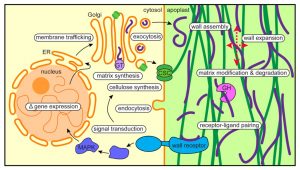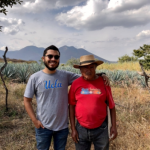What are the Big Open Questions in Plant Cell Biology?
 As scientists, we are at least as excited about the open questions—the things we don’t know—as the discoveries. Science happens in the interface between known and unknown. In the review article Fifteen compelling open questions in plant cell biology, published in The Plant Cell Focus Issue on Plant Cell Biology, we focus on the unknown, the mysteries waiting to be solved. We asked fifteen experts to write a short description of the biggest open question in their subfield of plant cell biology, which we have compiled here. The questions are listed in no particular order.
As scientists, we are at least as excited about the open questions—the things we don’t know—as the discoveries. Science happens in the interface between known and unknown. In the review article Fifteen compelling open questions in plant cell biology, published in The Plant Cell Focus Issue on Plant Cell Biology, we focus on the unknown, the mysteries waiting to be solved. We asked fifteen experts to write a short description of the biggest open question in their subfield of plant cell biology, which we have compiled here. The questions are listed in no particular order.
- How are organelle identity, domains, and boundaries maintained under the continuous flux of vesicle trafficking and membrane remodeling?
- Is the plant cortical microtubule cytoskeleton a mechanosensory apparatus?
- How are the cellular pathways of cell wall synthesis, assembly, modification, and integrity sensing linked in plants?
- Why do plasmodesmata open and close?
- Are there retro-signals from vacuoles to the nucleus?
- How do root cells accommodate fungal endosymbionts?
- What is the role of cell edges in plant morphogenesis?
- How is the cell division site determined?
- What are the emergent effects of polyploidy on the biology of the cell, and how are any such “rules” conditioned by cell type?
- Can mechanical forces trigger new cell fates in plants?
- How does a single differentiated somatic cell reprogram and gain pluripotency?
- How does polarity develop de-novo in isolated plant cells?
- What might the spectrum of cellular functions be for membraneless organelles and inherently disordered proteins?
- How do plants deal with internal noise?
- How does order emerge in cells and propagate to organs and organisms from chaos prone complex dynamical processes?
Some questions are age-old and have been studies for decades with great progress, yet each result opens deeper mysteries. Some questions are new, arising from a recent recognition of importance. We hope this collection of questions piques your curiosity, stimulates your interest in new topics, and maybe even generates ideas for future research. No list is ever complete. With only 15 questions, we have missed many other important mysteries. Please add your favorite open plant cell biology questions here.




Plant tissues and organs are developed from many different cells. How are these different cells cordinated and played a role
under different abiotic and biotic stress conditions?
How does a cell measure its size? Interesting recent work on this question from Robert Sablowski’s group (D’Ario, M., Tavares, R., Schiessl, K., Desvoyes, B., Gutierrez, C., Howard, M., and Sablowski, R. (2021). Cell size controlled in plants using DNA content as an internal scale. Science 372, 1176–1181.)
I would like to ask a question about curriculum – what topics do you think are most important for students to be learning now, so that they will be poised to understand and take part in plant cell biology in the next decade? the reason I ask is that we are now working on the 10th edition of a cell biology textbook (Karp’s Cell and Molecular Biology) and we want to increase the representation plant cell biology. Traditionally most cell biology books like Alberts have focused almost exclusively on animal cells. In the last edition of Karp we added additional sections on plant cell biology to every chapter, but our choice of what to include was perhaps a bit arbitrary. we would love to get some guidance from the Plant Cell community!!! if you can suggest a “wish list” of topics, that would be much appreciated. please feel free to either reply in this forum or else email me directly [email protected]